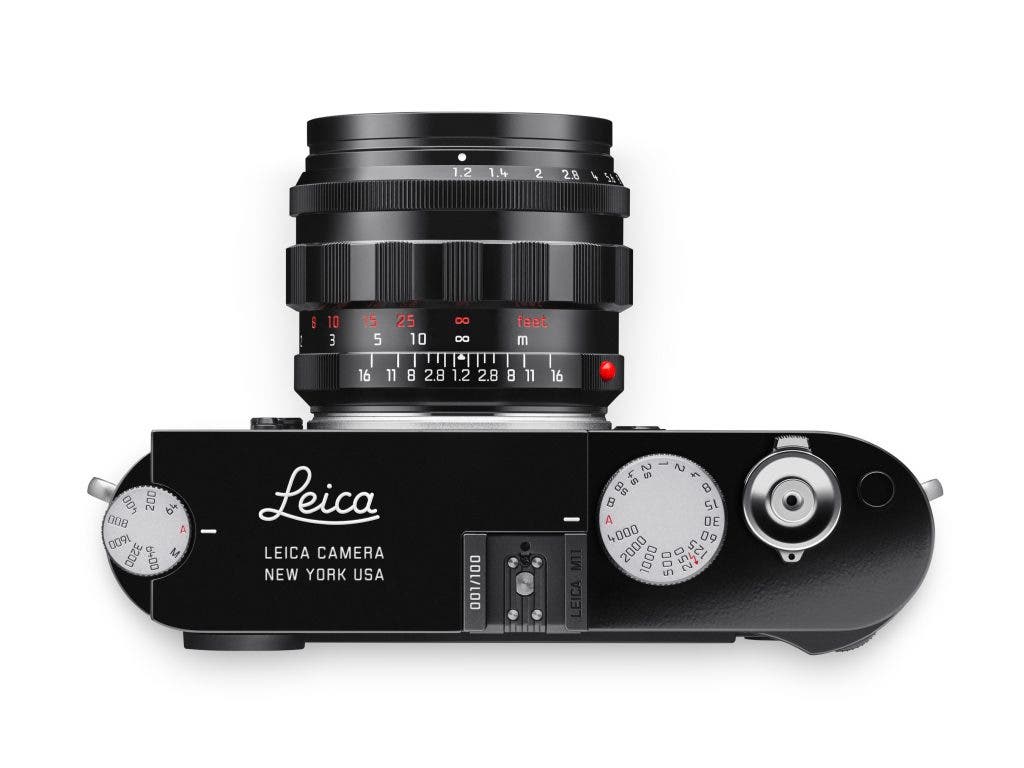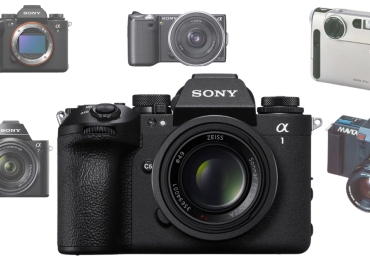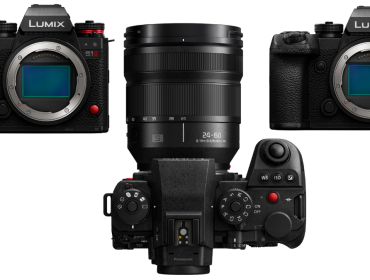The photo industry doesn’t slow down—and neither do we. A lot has happened in the industry in May, aka National Photography Month. As such, we are excited to recap some things you might have missed. Think of this as a mix of pivotal news and feature overviews. Additionally, product launches that you might have glossed over the first time around or just want to revisit. We are also reminded of how photography continues to shape the way we see the world as well as preserve personal, family, and community histories. From camera makers and print labs to independent artists, our goal, as always, is to drive awareness, engagement, and support. If you’re looking to upgrade your kit or just stay in the loop, here’s what is worth your attention.
INDUSTRY NEWS
Happy Birthday: Celebrating 100 Years of the Leica 1
In 1925, the game-changing Leica 1 made its public debut at the Leipzig Spring Fair in Germany. Designed by Oskar Barnack, it was the first mass-produced 35mm camera—compact, portable, and revolutionary. Photography was never the same.
Fast-forward to 2025, Leica celebrates 100 years of the Leica 1’s legacy. Featuring a global anniversary tour and coordinated events in Dubai, Milan, New York, Shanghai, and Tokyo. At the heart of it all? A limited-edition Leica M11 release—just 100 cameras per city—each engraved with its city’s name on the top plate.
The celebration, titled “100 Years of Leica: Witness to a Century,” kicked off in January at the Dubai Opera House, continued in Milan this past April, and wraps up at Leica’s headquarters in Wetzlar, Germany, this June. In between, New York got its turn on May 3rd with its own exclusive “NEW YORK USA” Leica M11 model. Leica finished the M11 in glossy black paint inspired by the vintage Leica M model. Additionally, they designed it to wear gracefully over time, developing a one-of-a-kind patina. Silver-chrome accents—shutter release, power switch, and dials—feature detailed cross knurling that adds an elegant, high-end touch.
For those wondering, yes, this limited-edition beauty comes with a serious price tag—$10,695, to be exact. Happy 100th to the Leica. Still iconic, still evolving.

The Sony World Photography 2026 Awards Opens June 1st, 2025
If you’ve been sitting on an image or series of images you’re incredibly proud of, looking for some much-needed exposure, or just need an excuse to create something new, take note—the Sony World Photography Awards 2026, marking its 19th year, opens on June 1st. Since its inception in 2007, this awards platform has championed inclusivity, elevated photographers’ careers, and, best of all, is free to enter.
The core categories and prizes stay relatively consistent year to year, but the 2025 awards introduced a new “Perspectives” category as well as the first edition of the Japan Professional Award. Other categories typically include architecture, creative, landscape, lifestyle, motion, natural world and wildlife, object, portraiture, street photography and travel.
Sony announced the 2025 winners in April, with British photographer Zed Nelson named Photographer of the Year for “The Anthropocene Illusion,” a project that explores the fractured relationship between humans and the natural world through artificial landscapes, such as safari parks and green cities. In addition to a $25,000 cash prize, Nelson received a range of digital imaging equipment, global exposure, and media presence. View the full list of 2025 winners and their prizes here.

New York Times Photographer Doug Mills Wins His First Solo Pulitzer
Veteran New York Times photographer Doug Mills recently won a 2025 Pulitzer in the Breaking News Photography category for his striking images captured during the attempted assassination of President Trump while he was speaking at an open-air campaign rally in June 2024.
Mills, known for his attention to detail and ability to capture pivotal moments, has enjoyed a lengthy and rewarding photojournalism career, covering the White House since 1983 and as a staff photographer for The New York Times since 2002. He also served as chief photographer for the Associated Press, where he previously won two team coverage Pulitzers—one for capturing the Clinton/Gore presidential campaign and one for his team’s coverage of the Monica Lewinsky/President Clinton affair.
This third Pulitzer marks his first solo win, this one awarded for his coverage during the attempted assassination, including an image showing a bullet in the air near Trump as he speaks to the crowd.
Moises Saman, a contributing photographer for The New Yorker, won a Pulitzer in the Feature Photography category for his black-and-white images of the Sednaya Prison in Syria, capturing the traumatic legacy of then-President Assad’s torture chambers.
Congratulations to both photographers for their incredible coverage!

Nikon Discontinues its Final Flagship DSLR, the D6
It’s officially the end of an era: Nikon announced the discontinuation of its last flagship DSLR, the D6, earlier this month. The decision reflects the broader industry shift toward mirrorless technology. Nikon is firmly focused on the mirrorless space with its own Z-series lineup of mirrorless cameras. These mirrorless models offer benefits like superior autofocus performance and real-time exposure previews through the electronic viewfinder. Once the current inventory sells out, new D6 units will no longer be available (though diehard fans can still turn to the used market).
The D6’s retirement marks the close of a legacy that began with the D1 in 1999. Nikon Unveiled in the D6 in 2019. Released in 2020, the D6 was designed with professional sports photographers and photojournalists in mind. It delivered Nikon’s most advanced autofocus system to date, alongside a 20.8MP full-frame CMOS sensor, EXPEED 6 processor, 14 fps continuous shooting, and 4K UHD video recording at 30 fps.
While you may still be able to find the D6 at select retailers for now, its discontinuation underscores a larger transformation in the photography world. As mirrorless technology continues to evolve, camera manufacturers are prioritizing lighter, faster, and more intuitive systems.

PRODUCT RELEASES
Leica Unveils its M11-P Safari Edition
With its distinctive olive-green “Safari” finish and matching textured leatherette (a design that dates back to the 1970s), Leica’s M11-P Safari Edition is a special iteration of Leica’s renowned M11-P digital rangefinder camera. Silver accents and an engraved Leica script on the top plate replace the brand’s traditional red dot logo, while a scratch-resistant sapphire glass LCD display offers more durability.
Inside, the M11-P Safari delivers exceptional imaging performance powered by a 60MP full-frame BSI CMOS sensor with Leica’s Triple Resolution Technology, allowing users to capture images at 60, 36, or 18 megapixels, depending on their needs. The camera supports an ISO range from 64 to 50,000 and features the Maestro III image processor with a 3GB buffer for fast, responsive shooting. With 256GB of internal storage and a UHS-II SD card slot, photographers have plenty of space and speed for high-resolution captures.
The M11-P was the first camera to include built-in Content Credentials, following the Content Authenticity Initiative (CAI) and C2PA standards to embed digital signatures for verifying image authenticity. It also includes a USB-C port for fast charging and data transfer, as well as direct connection to your Apple devices. The price tag? A hefty $10,495, but that will no doubt appeal to the serious collector.
Reaching for the Skies: The DJI Mavic Pro 4
The DJI Mavic Pro 4, which has been generating buzz for its upgrades in camera technology that will attract professionals and enthusiasts alike, was announced on May 13th, and the features are significant. Included is a new triple-lens camera system with a 4/3 CMOS Hasselblad main camera as well as an “Infinity” gimbal with a 360-degree rotation, improved obstacle sensing, increased flight time of up to 8 minutes of additional flight time compared to its predecessor, thanks to a new 95WH battery, and an optional collapsible remote-controller.The main camera also has the capability of recording 6K video at up to 60 frames per second, which is a significant upgrade from the Mavic 3 Pro’s 5.1K at 50 fps.
As Adorama writer Todd Terwilliger summed up in his May 13th article on the Adorama blog,“The Mavic 4 Pro ascends above DJI’s prior models with a bevy of enhancements, both large and small. This is, of course, in addition to all the usual features of a modern drone in this class, such as enhanced return to home capabilities, fast charging, and fast transferring of media over Wi-Fi or USB,” he writes. Read his full coverage of the DJI Mavic Pro 4 here.
Panasonic’s Lumix S1 II and S1 IIE Gives Hybrid Camera a Boost
Another highly anticipated release debuted earlier this month comes in the form of Panasonic’s Lumix S1 II and S1 IIE full-frame hybrid cameras, equally powerful for photography and videography, along with the 24-60mm f/2.8 lens.
Designed to handle both photo and video work with ease, the updated 24.1MP sensor on both cameras delivers vibrant colors, fast readout speeds, and impressive clarity. You also get open gate recording for high-res footage. If speed is your thing, the S1 II allows for burst shooting up to 70 frames per second—apparently the fastest burst mode ever in a LUMIX S Series camera. The S1 II also has 5.1K/60p open gate recording, dynamic range, real-time LUT features, AI-powered Phase Hybrid AF, and 8-stop active image stabilization. Key features of the S1 IIE include 6K/30p open gate recording, 4:2:2 10-bit Support, Real-Time LUT Feature, and 8-Stop Active Image Stabilization.
Panasonic also introduced a new 24-60mm f/2.8 lightweight lens alongside the two cameras, offering smooth, creamy bokeh at focal lengths that portrait and travel photographers rely on regularly. Read Adorama contributor Austin James Jackson’s coverage of Panasonic taking hybrid to a new level with these releases here.
Q6 Flash by Neewer Announced
Neewer kicked off the month by launching its latest outdoor studio flash, the Q6, which went on pre-order earlier this month and then began shipping on May 18th. Designed to handle the harsh lighting of the midday sun, the Q6 packs a punch with 600Ws of output power. It’s strong enough to light large softboxes and versatile enough for a range of outdoor setups. With a consistent 5700K color temperature, fast recycling times, TTL and high-speed sync (HSS) support, and smartphone app control, it offers both precision and convenience.
Built for durability, the Q6 features a robust quartz flash tube, weighs roughly 3kg (6.6 pounds) without the handle, and measures 195 x 185 x 170mm (7.7 x 7.3 x 6.3 inches), making it surprisingly portable given its power. All that makes it a great companion for location shoots. It’s also adaptable, offering both TTL and manual modes to suit different shooting styles. Even better, the built-in 2.4G wireless system makes it easy to integrate with other Neewer gear, so you can build out complex lighting setups without being tied down by cables. And with a high-capacity battery, you’ll get extended shooting time without worrying about frequent recharges—especially helpful during long days outdoors. Learn more here.
Nik Collection 8 Upgrades Announced
Earlier this month, DxO officially released its Nik Collection 8 upgrades, which appear to be a big improvement over previous upgrades and include plugins for Photoshop, Lightroom Classic, and PhotoLab. There is also a redesigned panel, enhanced masking tools, and some improvements to Silver Efex and Color Efex. The newly updated panel replaces the traditional Nik palette, offering a more seamless workflow and making access to masks and layers more immediate. So, photographers can import masks directly from Photoshop and into any Nik Collection plugin, and a new feature in the Local Adjustments panel also allows users to transfer masks between plugins. Overall, masks are now accessible throughout the workflow process, whether they were done in Photoshop or in a Nik Collection plugin. Learn more about the updates here.
New: Kentmere Pan 200 Black-and-White Film Announced
Here’s a new option for analog photographers: Harman recently announced a new black-and-white film available in 35mm and 120 roll film—the Kentmere Pan 200.
Kentmere is part of Harman Technology (the makers of Ilford black-and-white film) and is manufactured in the UK. It’s an expanding range of products that Harman says includes high-quality black-and-white films as well as contrast papers and filters.
According to Harman, Kentmere Pan 200 is “an ISO 200 black-and-white film, with enhanced contrast, pleasing, well-controlled grain, and good sharpness, making it suitable for most shooting applications and conditions.” Reviews of the new film have all highlighted the fact that the Kentmere Pan 200 offers great flexibility in different lighting conditions and has a finer grain than the Kentmere 400 and produces stronger contrast than both Kentmere 100 and 400.
Kentmere 200 is currently priced at $7.12 per roll in 35mm and 120 formats.
COPYRIGHT NEWS:
The Associated Press Holds Firm on Nick UT Credit of “Napalm Girl”
There’s no question that Napalm Girl, the iconic photo taken during the Vietnam War, is one of the most recognizable images in news photography. The photo has long been credited to Nick Ut, a photographer for the Associated Press but this past January a new documentary called The Stringer premiered at Sundance raised questions about the image’s authorship.
In the film, Nguyen Thanh Nghe claims he was the real photographer. The allegations are backed by interviews with people who were at the festival screening, including former AP staffer Richard Robinson. He suggests that Ut was given credit by his boss, Horst Faas, while Nghe’s role was overlooked. Nghe himself was at the premiere and publicly stated that he was the one behind the lens. In response, the Associated Press conducted an internal investigation and released a report on May 6 affirming that they have “no reason to believe anyone but Nick Ut took the image in question.” Ut’s attorneys have stated that that a defamation lawsuit against the filmmakers and the VII Foundation is likely.
Since that decision by the AP on May 6, the question of authorship continues. More recently, CNN, The New York Times and other news outlets have been reporting that World Press Photo, which named the image Photo of the Year in 1973, has “suspended its longstanding attribution to retired Associated Press photographer Nick Ut.”
World Press Photo executive editor Joumana El Zein Khoury states that, “the level of doubt is too significant to maintain the existing attribution” [to Nick Ut] but then adds that, “at the same time, lacking conclusive evidence pointing definitively to another photographer, we cannot reassign authorship, either.” Learn more on the AP news website here.
PRODUCT ANTICIPATION
Lens Envy: Tamron’s Announces New Releases Planned for 2025 and 2026
Tamron has been quietly ramping up its pace, launching more lenses each year—and it’s not slowing down anytime soon. In 2025, the company plans to release six new lenses, but looking ahead to 2026, Tamron is aiming even higher with a goal of putting out ten new lenses annually.
Just a couple of years ago, Tamron was averaging around five lens launches per year. Their original roadmap planned a modest bump to six or seven new models per year between 2024 and 2026. But they’ve already hit that milestone ahead of schedule. Now, they’re pushing further, projecting a consistent ten-per-year release cycle starting in 2026.
Tamron first mentioned that ten-lens target in its 2024 year-end report. Now, the latest update confirms six new lenses are coming in 2025—including the previously announced Z-mount and RF-mount versions of the 18-300mm f/3.5-6.3 VC VXD. That leaves four more mystery lenses set to debut this year.
Canon’s Ambitious Lens Plans
At the beginning of May, Canon filed a patent for quite an ambitious lens design—a 24mm lens with an f/0.7 aperture. This combo of ultra-wide and ultra-fast is basically unheard of due to size, weight, cost, and optical compromises. Yet, if it becomes a reality, such a lens could offer both photographers and filmmakers new creative possibilities in low-light scenarios. Canon is known for pushing the boundaries of lens design in the past. Consequently, this latest patent application is getting visual creatives excited. Stay tuned!
Remember to check out 42 West, where we keep you in the loop!






